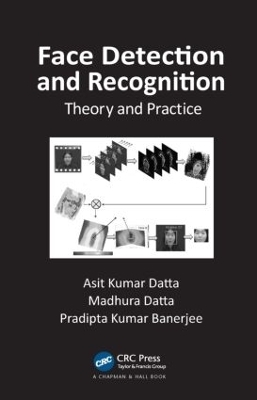
Face Detection and Recognition
Chapman & Hall/CRC (Verlag)
978-1-4822-2654-6 (ISBN)
Face detection and recognition are the nonintrusive biometrics of choice in many security applications. Examples of their use include border control, driver’s license issuance, law enforcement investigations, and physical access control.
Face Detection and Recognition: Theory and Practice
elaborates on andexplains the theory and practice of face detection and recognition systems currently in vogue. The book begins with an introduction to the state of the art, offering a general review of the available methods and an indication of future research using cognitive neurophysiology. The text then:
Explores subspace methods for dimensionality reduction in face image processing, statistical methods applied to face detection, and intelligent face detection methods dominated by the use of artificial neural networks
Covers face detection with colour and infrared face images, face detection in real time, face detection and recognition using set estimation theory, face recognition using evolutionary algorithms, and face recognition in frequency domain
Discusses methods for the localization of face landmarks helpful in face recognition, methods of generating synthetic face images using set estimation theory, and databases of face images available for testing and training systems
Features pictorial descriptions of every algorithm as well as downloadable source code (in MATLAB®/PYTHON) and hardware implementation strategies with code examples
Demonstrates how frequency domain correlation techniques can be used supplying exhaustive test results
Face Detection and Recognition: Theory and Practice provides students, researchers, and practitioners with a single source for cutting-edge information on the major approaches, algorithms, and technologies used in automated face detection and recognition.
Asit Kumar Datta is a former professor of the University of Calcutta (CU), Kolkata, India, where he served in the Department of Applied Physics and the Department of Applied Optics and Photonics. He holds an M.Tech and Ph.D from the same university. Dr. Datta spent 19 years as a professor and a total of 40 years of teaching and research at the post-graduate level at CU. In addition, he served for 8 years as a principal scientist/principal scientific officer of a CU research center in optical electronics. Widely published in international journals and conference proceedings, Dr. Datta has guided 14 scholars toward their Ph.Ds and has published nearly 125 papers. He has contributed significantly in the areas of photonic computation, photonic and electronic instrumentation, optical communications, and pattern recognition. He represented India at the International Commission on Optics and the International Commission on Illumination. Madhura Datta is the assistant director of the University Grants Commission-Human Resources Development Center, University of Calcutta, Kolkata, India. She holds an M.Sc in computer and information science, and an M.Tech and Ph.D in computer science and engineering from the University of Calcutta. Her primary areas of research are face detection and recognition. Her work has been featured in various technical publications and conference proceedings, including the Journal of Pattern Recognition Research, Computer Vision and Image Understanding, International Journal of Pattern Recognition and Artificial Intelligence, International Conference on Pattern Recognition and Machine Intelligence, and IEEE International Conference on Intelligent Human Computer Interaction. Pradipta Kumar Banerjee is an associate professor in the Department of Electrical Engineering of the Future Institute of Engineering and Management, Kolkata, India. He holds a B.Sc, B.Tech, M.Tech, and Ph.D from the
Introduction. Face detection and recognition techniques. Subspace based face recognition. Face detection by Bayesian approach. Face detection in colour and infrared images. Intelligent face detection. Real time face detection. Face space boundary selection for face detection and recognition. Evolutionary design for face recognition. Frequency domain correlation filters in face recognition. Subspace based face recognition in frequency domain. Landmark localization for face recognition. Two dimensional synthetic face generation using set estimation technique. Datasets of face images and performance tests for face recognition.
| Erscheint lt. Verlag | 4.1.2016 |
|---|---|
| Sprache | englisch |
| Maße | 156 x 234 mm |
| Gewicht | 816 g |
| Themenwelt | Informatik ► Grafik / Design ► Digitale Bildverarbeitung |
| Informatik ► Theorie / Studium ► Künstliche Intelligenz / Robotik | |
| Recht / Steuern ► Strafrecht ► Kriminologie | |
| Technik ► Elektrotechnik / Energietechnik | |
| ISBN-10 | 1-4822-2654-5 / 1482226545 |
| ISBN-13 | 978-1-4822-2654-6 / 9781482226546 |
| Zustand | Neuware |
| Haben Sie eine Frage zum Produkt? |
aus dem Bereich


